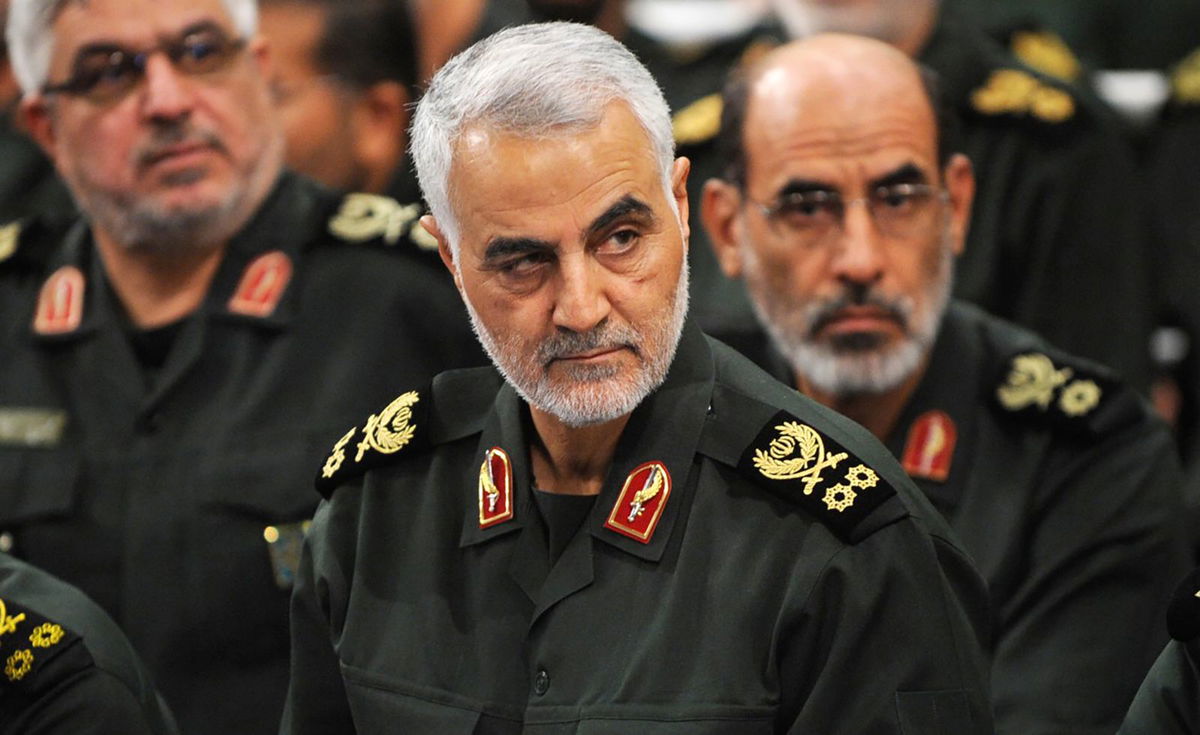At least 103 killed in blasts near Iranian military commander Qasem Soleimani’s grave

Originally Published: 03 JAN 24 07:58 ET Updated: 03 JAN 24 10:12 ET By Mostafa Salem, Abbas Al Lawati and Rob Picheta, CNN
(CNN) — At least 103 people were killed Wednesday and 141 injured in the Iranian city of Kerman after twin blasts near the burial site of slain military commander Qasem Soleimani, in what officials called a terror attack, according to state media.
The blast came on the fourth anniversary of Soleimani’s death in a US air strike, and threatens to accelerate tensions in the region that have spiked since the start of the Israel-Hamas war in Gaza.
The first explosion was 2,300 feet (700 meters) from Soleimani’s grave, and the second was 0.6 miles (1 kilometer) away as pilgrims visited the site, IRNA added.
Soleimani was killed by a US airstrike ordered by former President Donald Trump at Baghdad International Airport four years ago Wednesday.
No group has yet claimed responsibility for the blasts.
Videos posted on Iranian state media showed large crowds running in the area after the explosion.
Footage also showed bloodied bodies being transported from the scene, and ambulances leaving the site through large crowds.
Formerly one of Iran’s most powerful men, Soleimani was head of the Revolutionary Guards’ Quds Force, an elite unit that handles Iran’s overseas operations and was deemed to be a foreign terrorist organization by the US.
The Pentagon says Soleimani and his troops were “responsible for the deaths of hundreds of American and coalition service members and the wounding of thousands more.”
Known as Iran’s “shadow commander,” Soleimani – who had led the Quds Force since 1998 – was the mastermind of Iranian military operations in Iraq and Syria.
Blast comes at tense moment in region
The blast occurred amid heightened tensions in the region as Israel fights a three-month war against Hamas in Gaza prompted by the militant group’s October 7 attack on Israel.
That war has left more than 23,000 people dead in Gaza, according to the Hamas-run Ministry of Health in the enclave, and has led to skirmishes beyond Israel and Gaza, often involving Iran-backed militias.
On Tuesday, a senior Hamas leader was killed in a suburb of Beirut in a blast that a US official told CNN was carried out by Israel. Israel hasn’t confirmed or denied involvement but Hamas and the militant group Hezbollah, which controls the suburb, blamed Israel and have vowed revenge.
Hezbollah’s leader Hassan Nasrallah is set to deliver a speech on Wednesday, his third since the war broke out. The speech was announced before the Beirut attack.
Last week, Iran and several of its armed proxies accused Israel of assassinating a senior Iranian commander in Syria, vowing retaliation. Israel didn’t comment on the matter.
Israel accuses Tehran of funding and arming Hamas. Israeli Defense Minister Yoav Gallant said last month that his country is in a “multi-arena war,” being attacked from seven arenas, including Iran. “We have already responded and acted in six of these decrees” he said.
The United States has also stepped up its military involvement in the Middle East recently. Last month, the military carried out airstrikes on Iranian-backed Kataib Hezbollah and “affiliated groups” in Iraq after an attack injured three US troops.
And last week, US helicopters sank three boats belonging to Iran-backed Houthi rebels in the Red Sea after coming under fire, killing those on board. The event marked the first time since tensions broke out earlier last year that the US killed members of the rebel group.
The White House said it wasn’t seeking a wider conflict. The Houthis have carried out several attacks on merchant vessels in the Red Sea in retaliation for Israel’s assault on Hamas, disrupting trade in one of the world’s most important waterways.
The-CNN-Wire
™ & © 2024 Cable News Network, Inc., a Warner Bros. Discovery Company. All rights reserved.